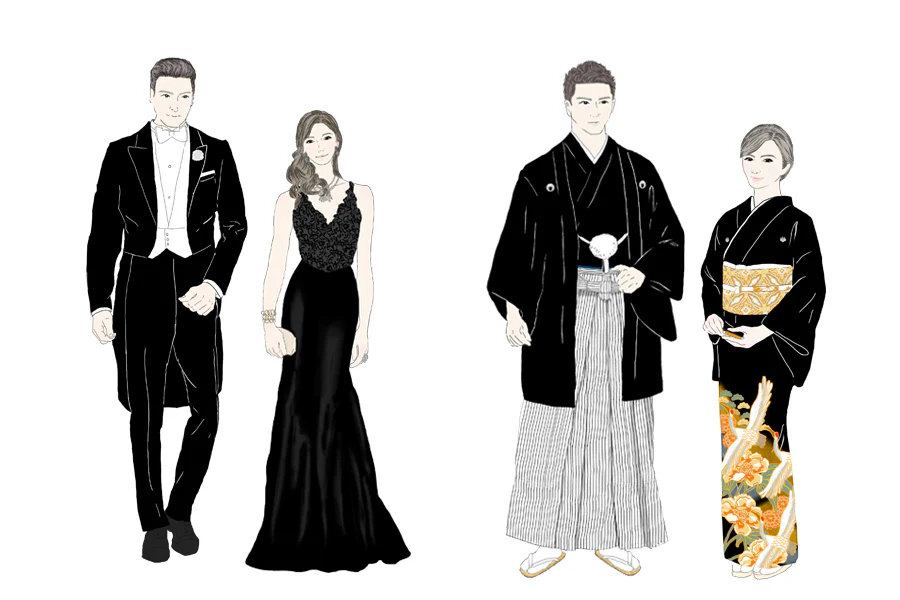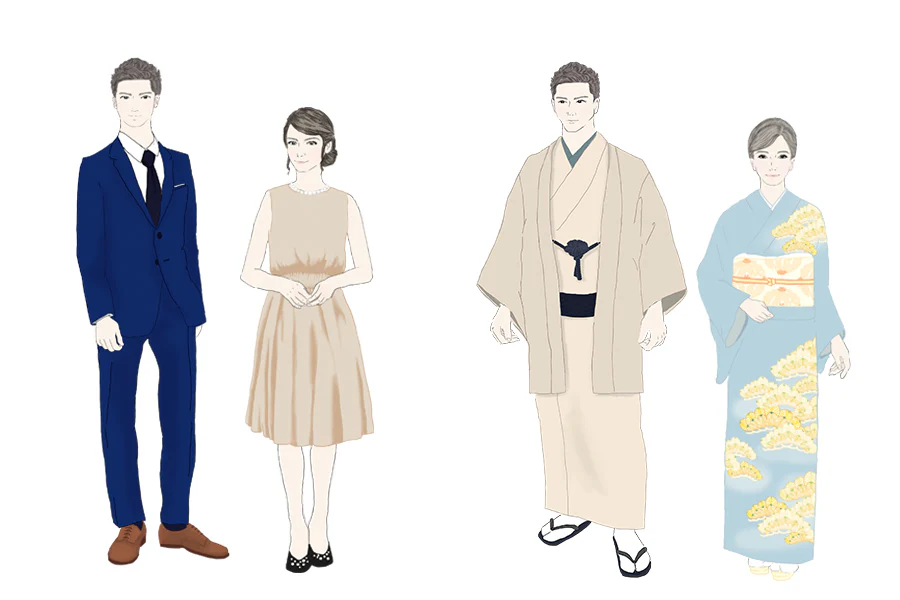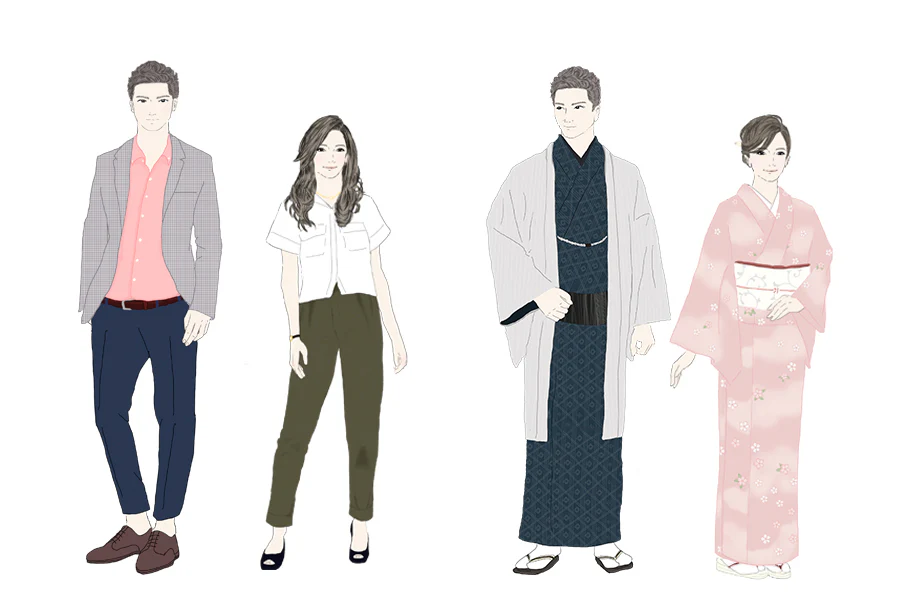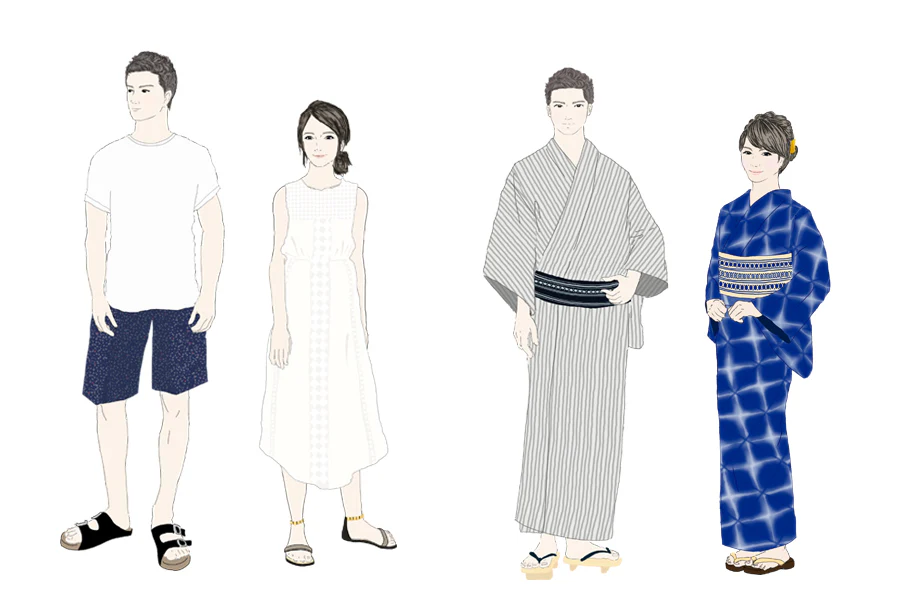Kimono Formalitätsstufen
- tanjaschneider96
- May 21, 2024
- 4 min read
As briefly touched upon in the last post, today's focus will be on the different levels of formality in kimonos. To do this, I'll be drawing from the visual graphics on the Motoji website, which offers detailed descriptions and wonderful comparisons.

Japan is a country of rules, much like Germany, except here, even unspoken rules are adhered to. It's a society that places great emphasis on harmony and reason, and this is where the world of kimonos thrives. Knowledge about formality, colors, and patterns has traditionally been passed down from mother to daughter. However, with modernization, much of this knowledge has been lost, interest has waned, and many Japanese today have little connection to this aspect of their culture. That's why I find it all the more important to consolidate the available knowledge and share it with the world, so that future generations can benefit from it.
n conversations with friends, I often notice a lot of half-truths circulating on the internet and many people who wish to respectfully engage with Japanese culture being led astray.
This is one of the reasons why I'm passionate about spreading easily understandable and ACCURATE information.
But now let's get to the main topic: "Formalities in the Kimono World."
The formal order of kimonos can be listed as follows, with the following items seen from left to right:
Kuro-Montsuki/Kuro-Tomesode
Iro-tomesode
Furisode
Funerals = entirely black attire with family crest (mon)
2. Semi-formal Kimono:
Houmongi
Tsukesage
Iromuji
3. Casual Kimono
4. Yukata
Formal Kimono
In various scenarios, ranging from weddings to ceremonial occasions like award ceremonies, clothing plays a significant role.
Men present themselves in Kuro-Montsuki, a black kimono with a crest, accompanied by a haori (jacket) and hakama (wide trousers). This combination adorns grooms, fathers of the bride and groom, and other esteemed relatives. Women, on the other hand, opt for Kuro-tomesode, a black formal kimono with a crest, with the pattern appearing below the knees. This elegant choice is reserved for mothers of the bride and groom, as well as other married relatives. For guests, kimonos like Iro-tomesode, a colorful formal kimono with a crest, are intended, adorning the married guests, while the Furisode, with its long sleeves, highlights the unmarried among them.
Even in sad moments, such as funerals, clothing plays a significant role. Men wear black kimonos, haoris, and hakamas as an expression of their respect. Women also dress in black kimonos with crests, as a sign of mourning and respect. However, subtle differences may occur depending on the personal relationship with the deceased and regional customs.
The deceased person themselves is dressed in a completely white kimono, so they can transition to the next life cycle without attachments.
The Japanese seasons also dictate the choice of fabric. From October to May, lined kimonos (Awase-Kimono) are preferred, promising warmth and luxury. In June and September, unlined kimonos (Hitoe) are preferred, offering welcome cooling. In July and August, lightweight, transparent kimonos (Natsumono) can be found, providing comfortable wear despite the heat.
Semi-Formelle Kimono
Celebrations, anniversaries, graduation ceremonies, semi-formal corporate events, dinner parties, and entertaining guests are suitable occasions for semi-formal kimonos.
Men wear kimonos and haoris in plain colors and can enhance the formal appearance of the outfit by wearing a hakama additionally.
Women have three main types of kimonos to choose from for semi-formal occasions. They are listed according to their formality: 1. Houmongi (patterned kimono with the pattern flowing over the seams), 2. Tsukesage (patterned kimono with the pattern not flowing over the seams), and 3. Iromuji (plain-colored kimono or extremely small-patterned kimono). The appropriate choice depends on your position and the region. A family crest on the shoulder or sleeve increases the formality of the garment.
Everyday Kimono
Everyday life presents numerous opportunities, whether it's for shopping, dates, or visiting museums.
Various options are available for choosing materials, including silk, wool, cotton, linen, and other natural fibers. While pure silk fabrics are standard for formal occasions, other materials can be worn for informal occasions. Some even prefer synthetics like polyester because of its easy-care properties.
The type of kimono varies depending on personal taste and the situation. In addition to the kimono, the haori and hakama can also be worn depending on preferences, location, and temperature, although they are not necessarily required in informal situations.
Yukata
Summer brings a wealth of events, from festivals and fireworks to cozy gatherings at home.
For these occasions, lightweight fabrics like cotton and linen are ideal. The yukata, a summer kimono made of cotton or linen, is the perfect choice for both men and women. It's worn at relaxed summer festivals and at home like a dressing gown. Yukatas are often adorned with lively patterns and resemble more a T-shirt and shorts or an airy summer dress with sandals. Unlike other kimonos, a nagajuban, or under-kimono, is not worn under the yukata, usually only a light undergarment.
Many men today wear fewer yukatas and opt for jinbei instead, which consist of shorts and a wrap shirt made of airy cotton or linen.
Outside of Japan, there are no strict rules regarding the choice of kimonos for different seasons and events, as set out in the traditional Japanese kimono canon. Many young people also feel the need to express their own creativity and the new spirit of the times in how they wear a kimono, loosening the existing rules.
However, at formal occasions, one should dress not only for oneself but also for the other guests and hosts. In such moments, it is advisable to adhere to the rules of the traditional kimono canon.
All information is available for reference in English on the Motoji website. If you have any further questions, feel free to ask.








コメント